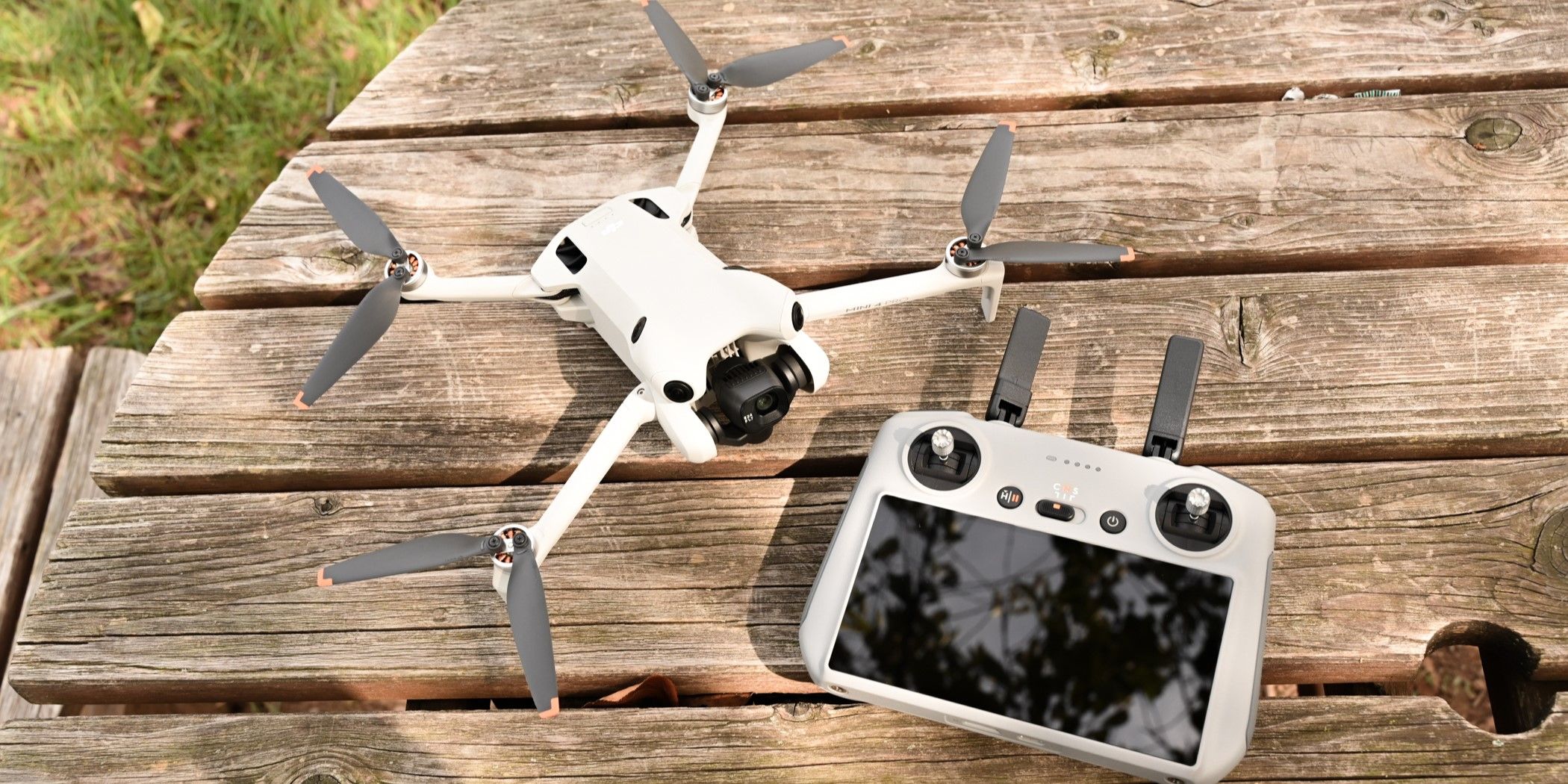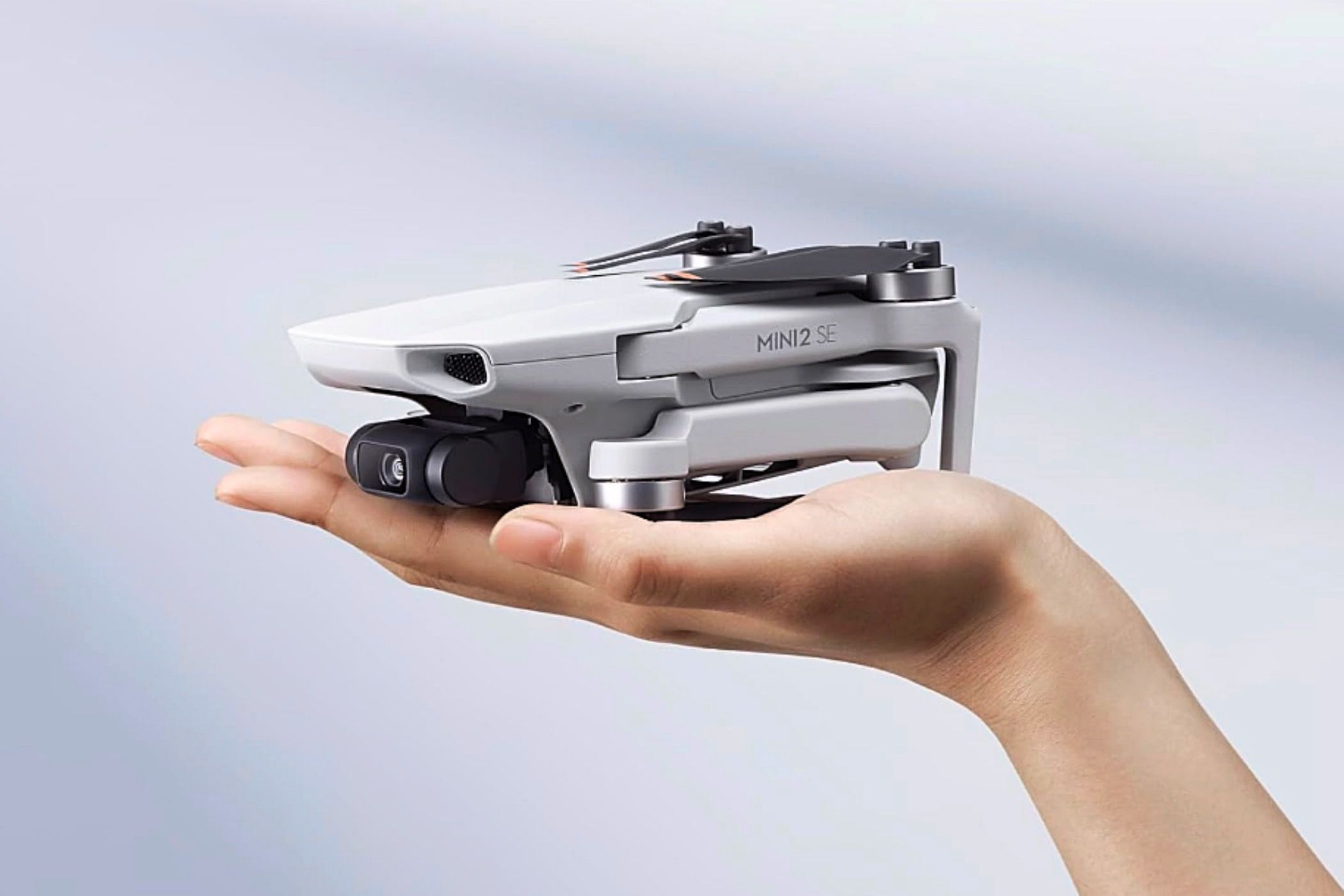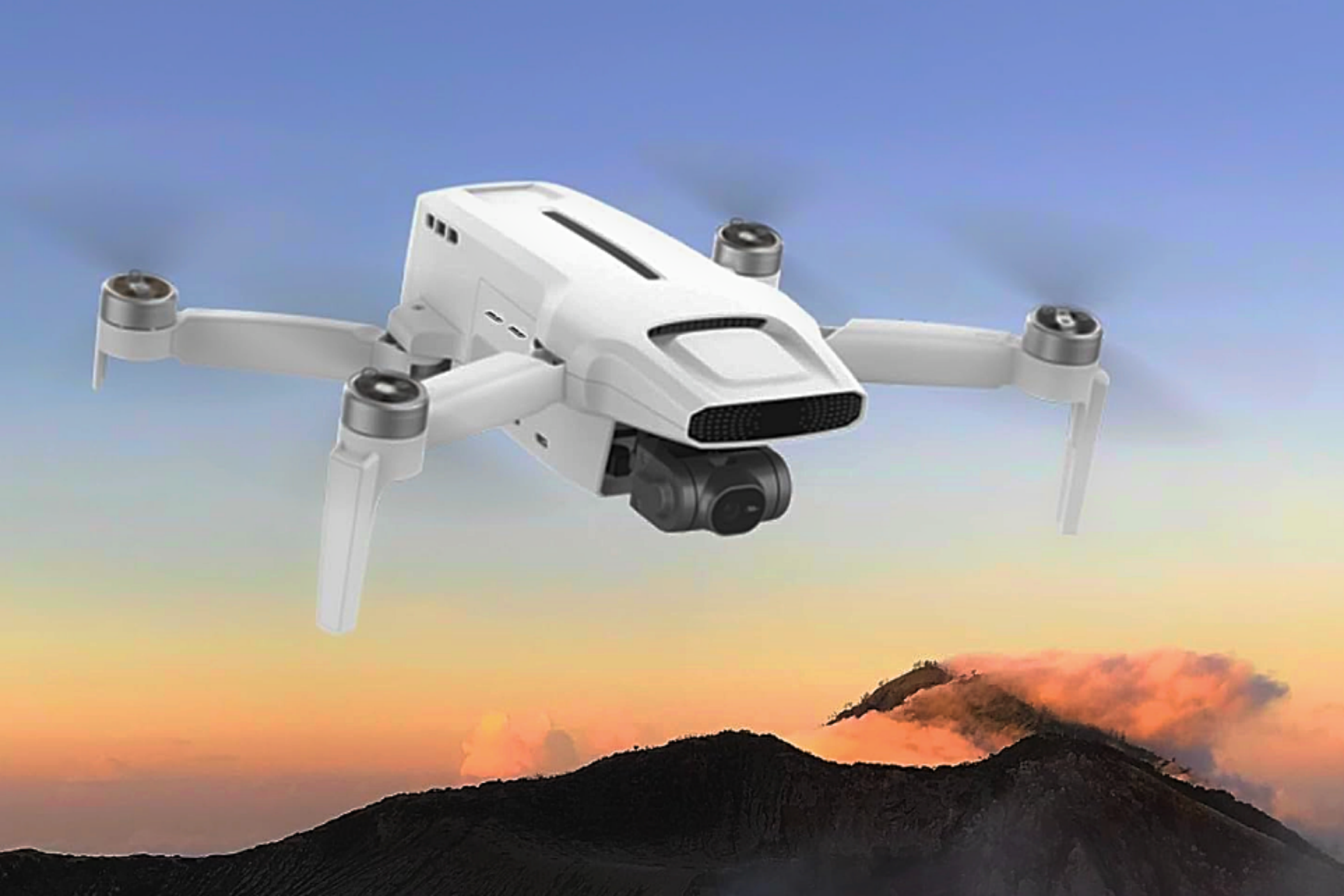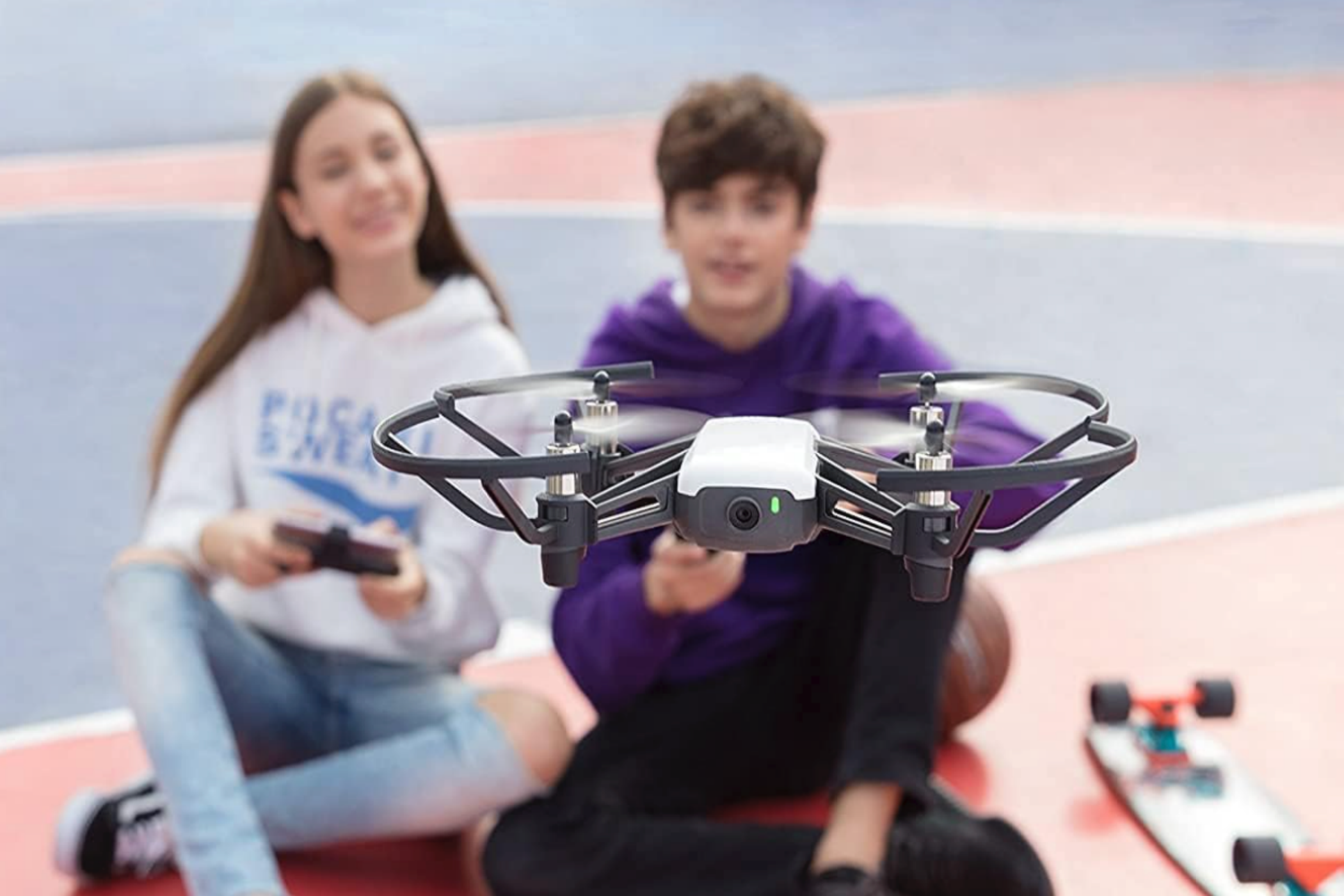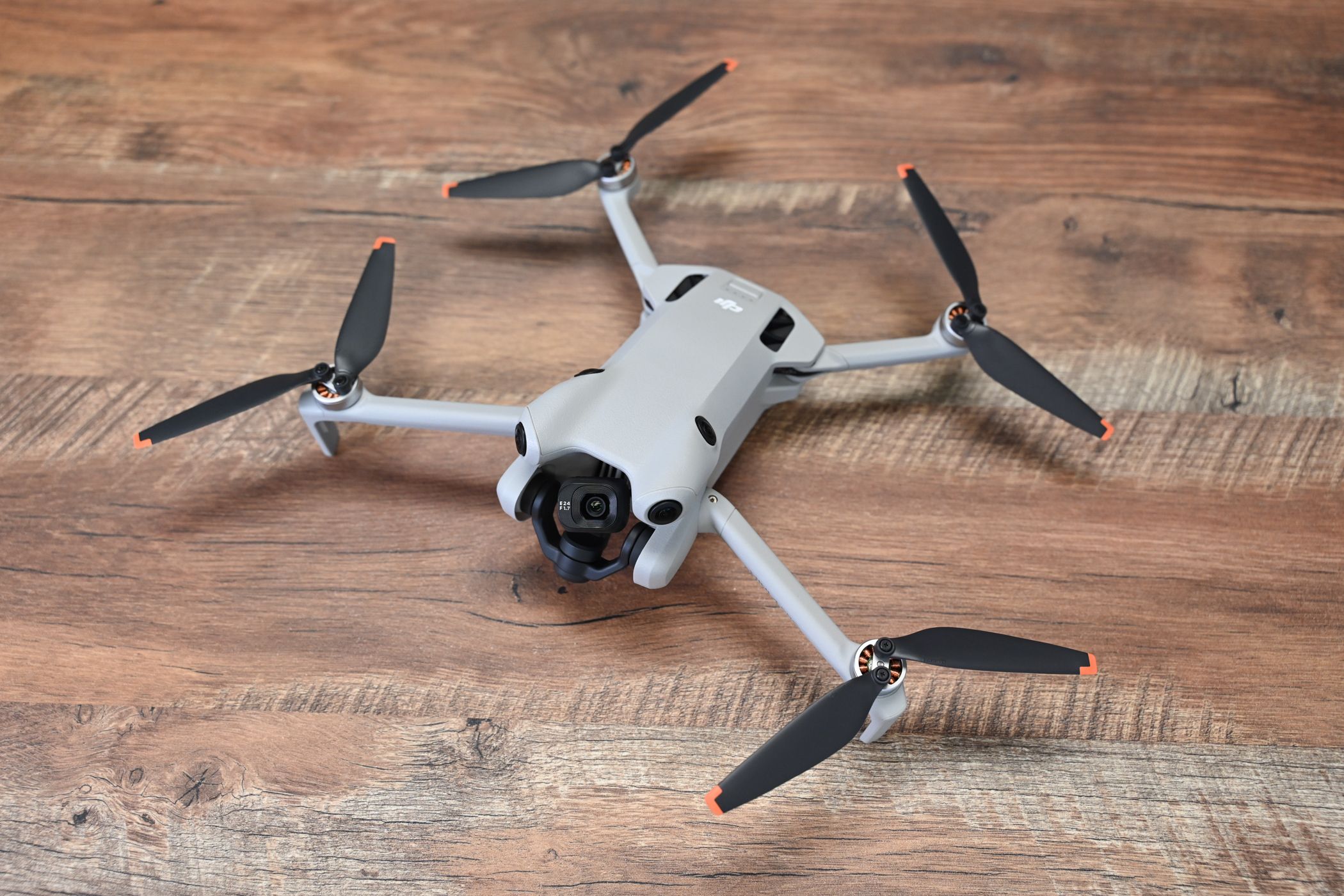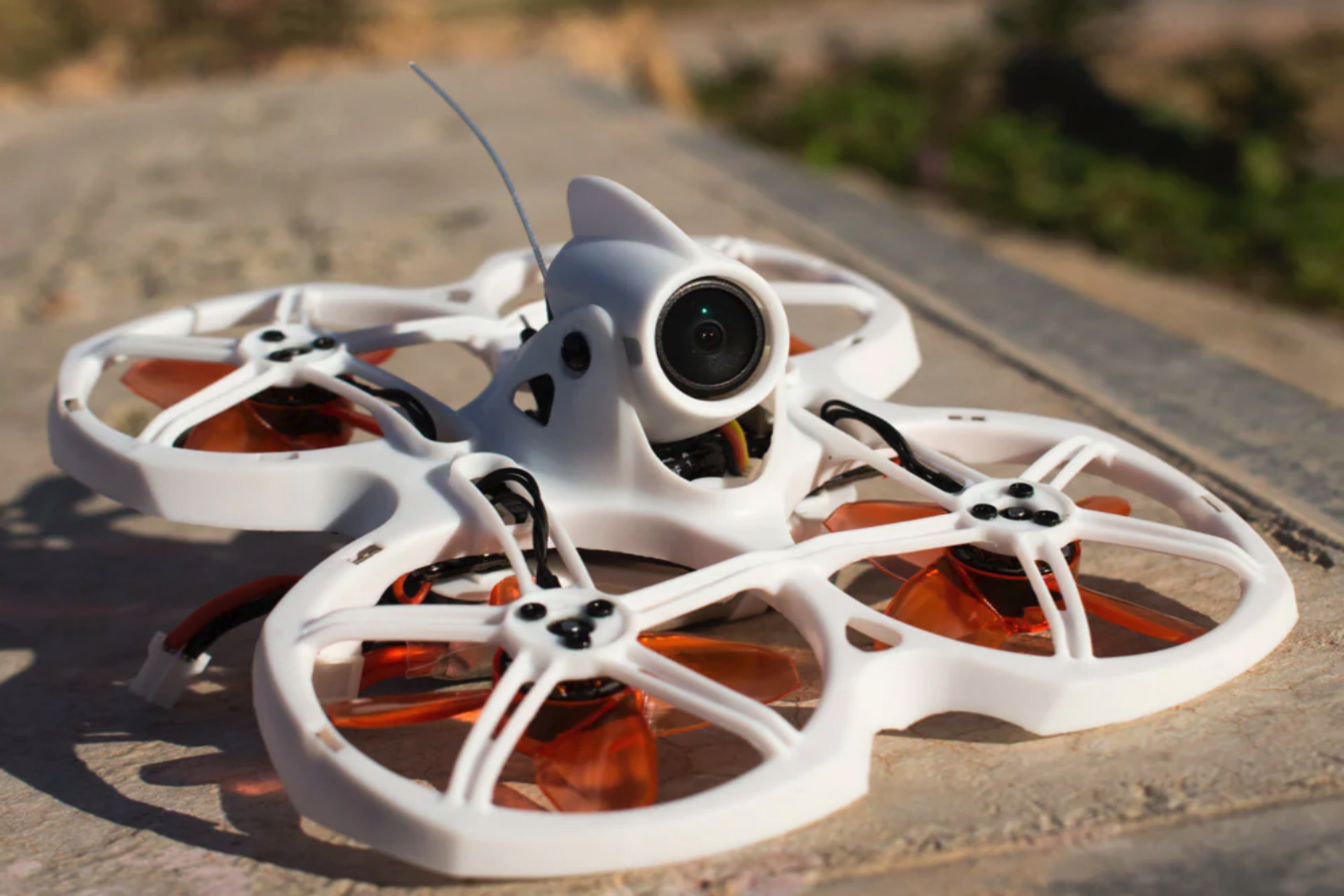Mini drones usually fall under the 250-gram limit set by the FAA for drone registration. The best ones don't compromise on quality, either, with their impressive cameras, long transmission ranges, and safety features.
Best Overall Mini Drone: DJI Mini 2 SE
As long as you're okay without the absolute best image quality a DJI mini drone can offer, the DJI Mini 2 SE is a solid choice. It provides an excellent balance between quality and value, and it beats cost-equivalent non-DJI mini drones for performance with its superior camera and features.
The lens is a wide-angle 24mm full-frame equivalent with an f/2.8 aperture, and the camera delivers images and video that will satisfy most looking for a drone in this price range.
In addition to weighing less than 250g, it has pocket-sized dimensions when folded down. It’s also an excellent mini drone for beginners with its superb automated flight paths, level-5 wind resistance, and Return-to-Home function.
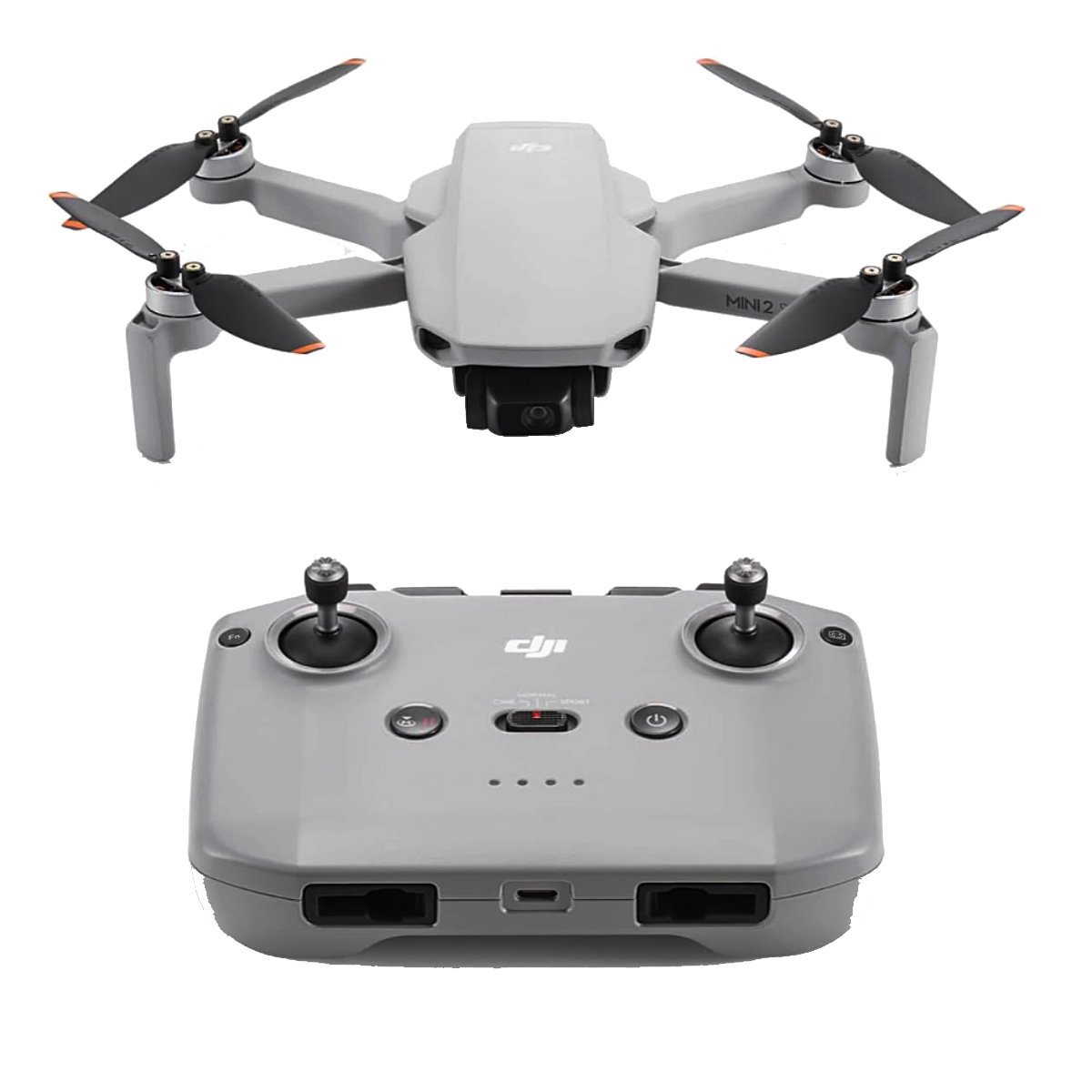
DJI Mini 2 SE
DJI manufactures the best pocket drones. While the DJI Mini 2 SE doesn’t quite match the image quality that more premium DJIs offer, it does provide an excellent balance between affordability and quality. The 2.7K video and 12MP stills are good enough for most people, while it also beats the FAA weight threshold, folds down to pocket-sized dimensions, and has excellent battery life.
- Level-5 (38kph) wind resistance
- 3-axis gimbal
- Smooth 2.7K video
- Excellent automated flight paths
- Good battery life
- No obstacle avoidance
Best Budget Mini Drone: FIMI X8 Mini V2
If you’re looking for a mini drone that's more affordable than DJI models, or the lack of 4K video on the Mini 2 SE doesn’t float your boat, consider the FIMI X8 Mini V2. You can shoot bright and smooth 4K video at frame rates of up to 30fps, and it’s also capable of decent 12MP stills.
The 3-axis gimbal stabilizes video well, and the drone has a level-5 (38kph) wind resistance. And, if it gets too breezy, the return-to-home function is accurate. Video transmission is up to 9km, but there's no obstacle avoidance system, so it might be better to fly in wide-open spaces until you are piloting with more confidence.
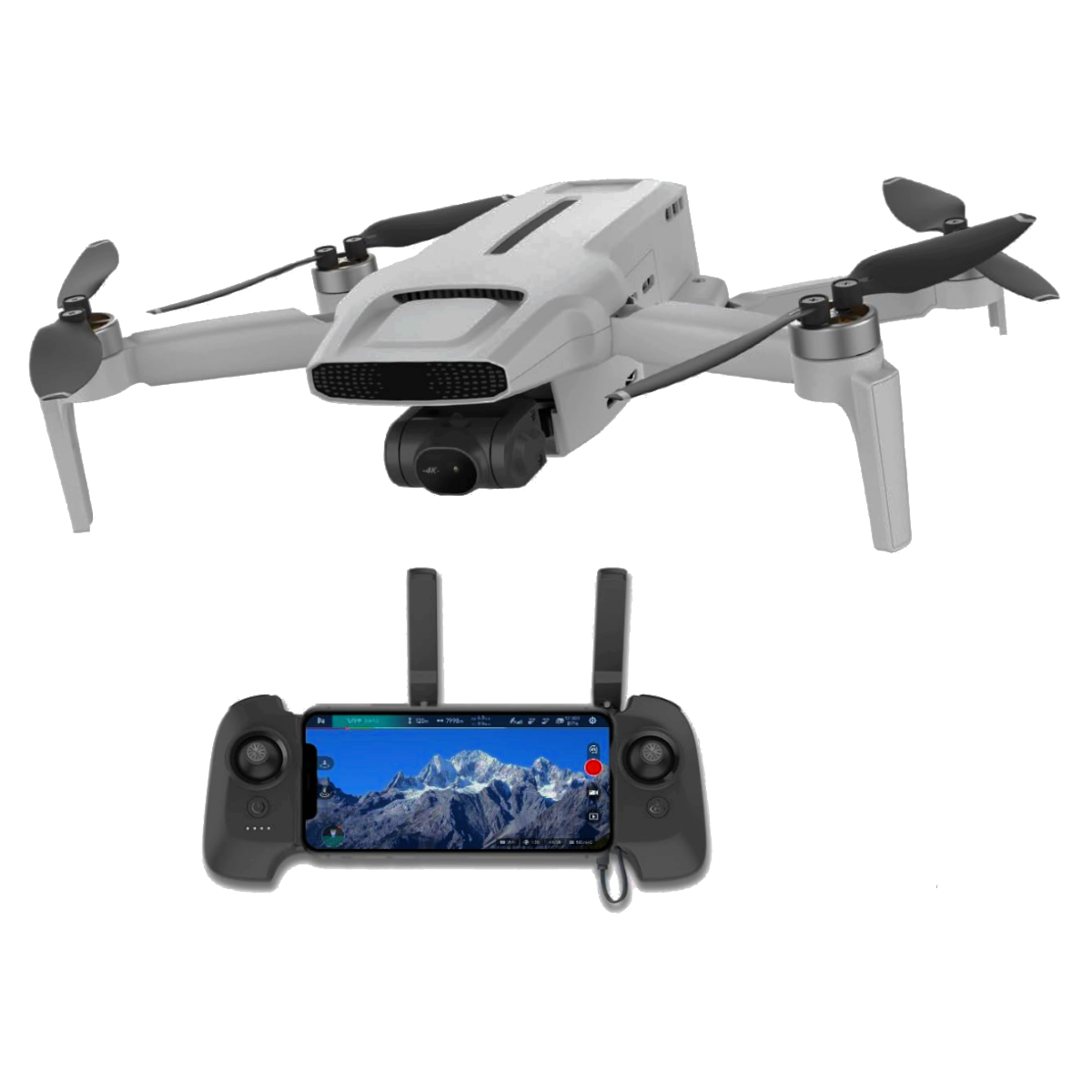
FIMI X8 Mini V2
An alternative option to the DJI Mini 2 SE is the X8 mini V2 from FIMI. Its biggest selling point at this price is its 4K video capability. You can shoot satisfyingly detailed videos and good-quality stills without breaking the bank. In addition, the 3-axis gimbal and level-5 wind resistance make it a good choice for recording video in breezy conditions.
- Good standard battery life and fast USB-C charging
- Excellent intelligent flight modes
- Good video transmission range
- Level-5 wind resistance
- 3-axis gimbal
- No obstacle avoidance system
- The optional Intelligent Flight Battery Plus takes the weight over 250g
Best Mini Drone for Beginners: Ryze Tech Tello
The tiny Ryze Tech Tello is a collaboration between Ryze and DJI. It weighs just 80g with the battery and folds down to pocket-sized dimensions. It’s perfect for travel, and its budget price tag and easy-to-fly nature make it the ideal pick for kids and novices.
You can develop your flying skills without the fear of damaging pricey equipment, and you can also practice your photography and videography skills. You'll unlikely have photos featured on the cover of magazines, but image quality is acceptable for a drone in this price range. You'll get the best images in well-lit conditions and when utilizing the EIS to compensate for the lack of a gimbal.
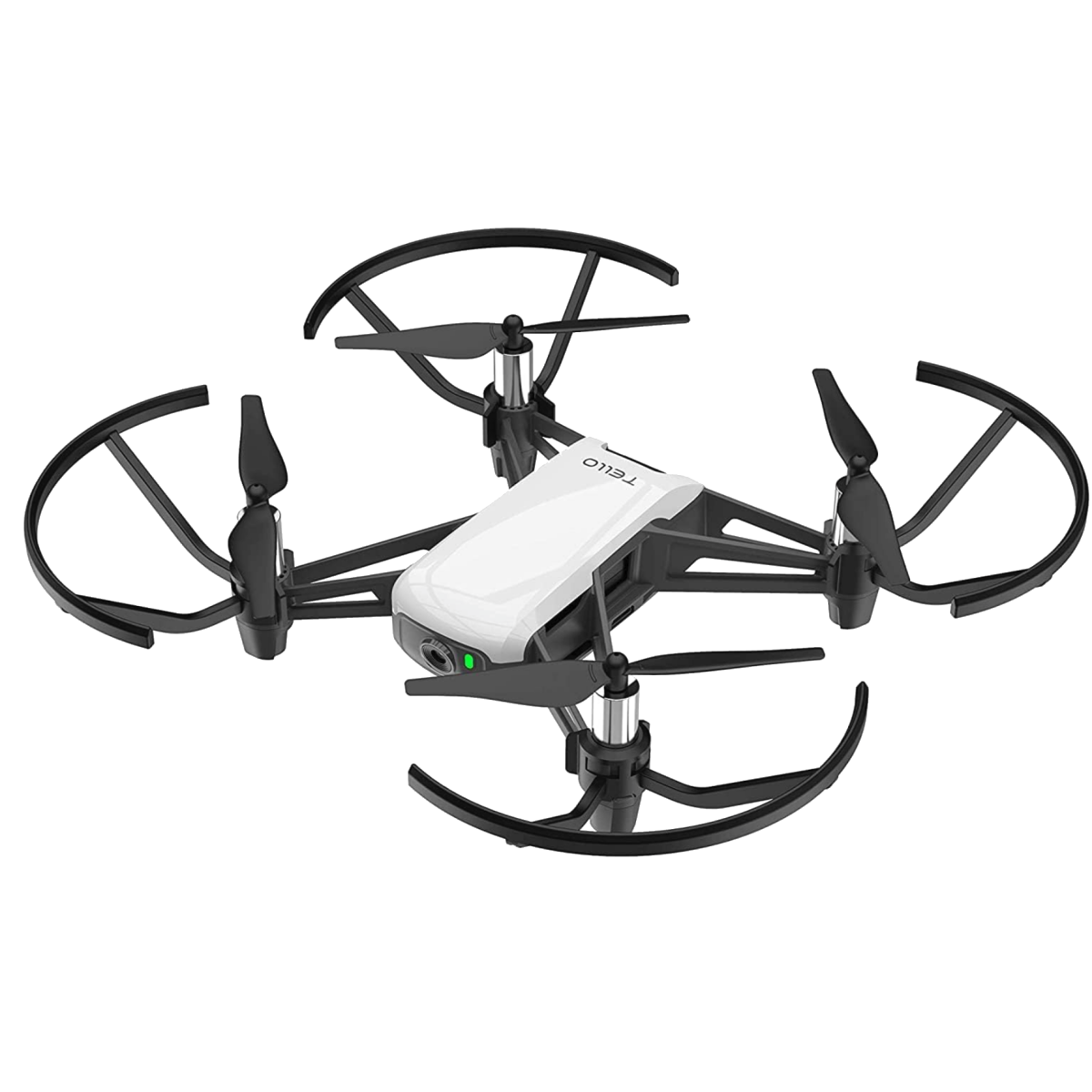
Ryze Tech Tello
An ideal choice for beginners in the world of drone flying is the Ryze Tech Tello. It’s a good shout for practicing flips, tricks, and navigation, and also affordable enough to reduce damage-related anxiety. The camera won’t deliver award-winning images, but it will help you to practice your photo- and video-capturing skills.
- Propeller guards for safe indoor use
- Excellent choice for developing flying skills
- Budget-friendly
- Pocket-sized and featherlight
- The Boost Combo package contains three batteries
- Not much use in windy conditions
- 100-meter flight range
- Short battery life
Mini Drone With the Best Camera: DJI Mini 4 Pro
The DJI Mini 4 Pro is an improvement on the already excellent Mini 3 Pro. While the still image quality remains the same, you can now shoot 4K video at up to 100fps (60fps in HDR) for better slow-motion videos.
The obstacle avoidance system has also been upgraded to an ActiveTrack 360 omnidirectional system. This update is perhaps the most significant upgrade and is a good reason why beginners shouldn’t shy away from splashing out on this premium mini drone.
Flight time is good at 34 minutes, or you can purchase the Fly More Combo pack with the DJI RC2 and two extra batteries or the Fly More Combo Plus for a total of two hours and 15 minutes of flight time.
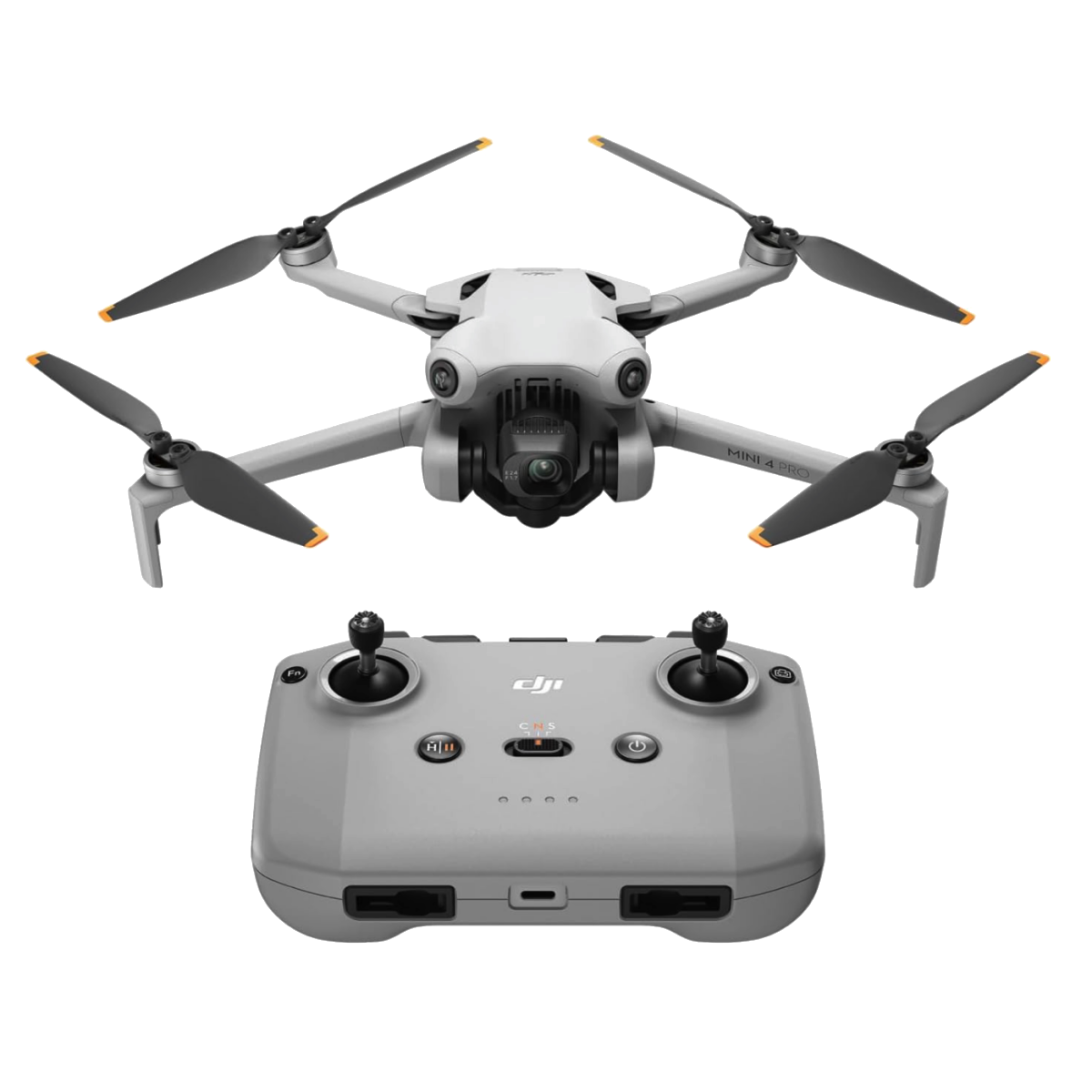
DJI Mini 4 Pro
The DJI Mini 4 Pro succeeds the Mini 3 Pro and replaces it as the King of Cameras in the mini-drone market. It remains an excellent choice for both entry-level and seasoned pilots thanks to significant upgrades, such as its omnidirectional obstacle avoidance and 4K at 100fps (60fps in HDR) video captures.
- 4K at up to 100fps for slo-mo shots and 60fps in HDR
- 10-bit D-Log M for advanced color grading
- 360-degree obstacle avoidance
- Similar pricing to the Mini 3 Pro
- Excellent Combo Pack options
- May not be worth the upgrade if you already own a Mini 3 Pro
Best Racing Mini-Drone: EMAX Tinyhawk 2
This little quadcopter is good value for anyone looking for a well-priced, entry-level FPV racing drone. It features the excellent RunCam Nano 2 camera that transmits a clear and crisp picture back to the included FPV goggles for a fun flight experience.
Coupled with a powerful 16,000KV motor, the EMAX Tinyhawk 2 is a significant improvement on its popular predecessor. The throttle response LED system adds another layer to the fun; the brightness increases as you hit the gas, giving more energy to your drone races.
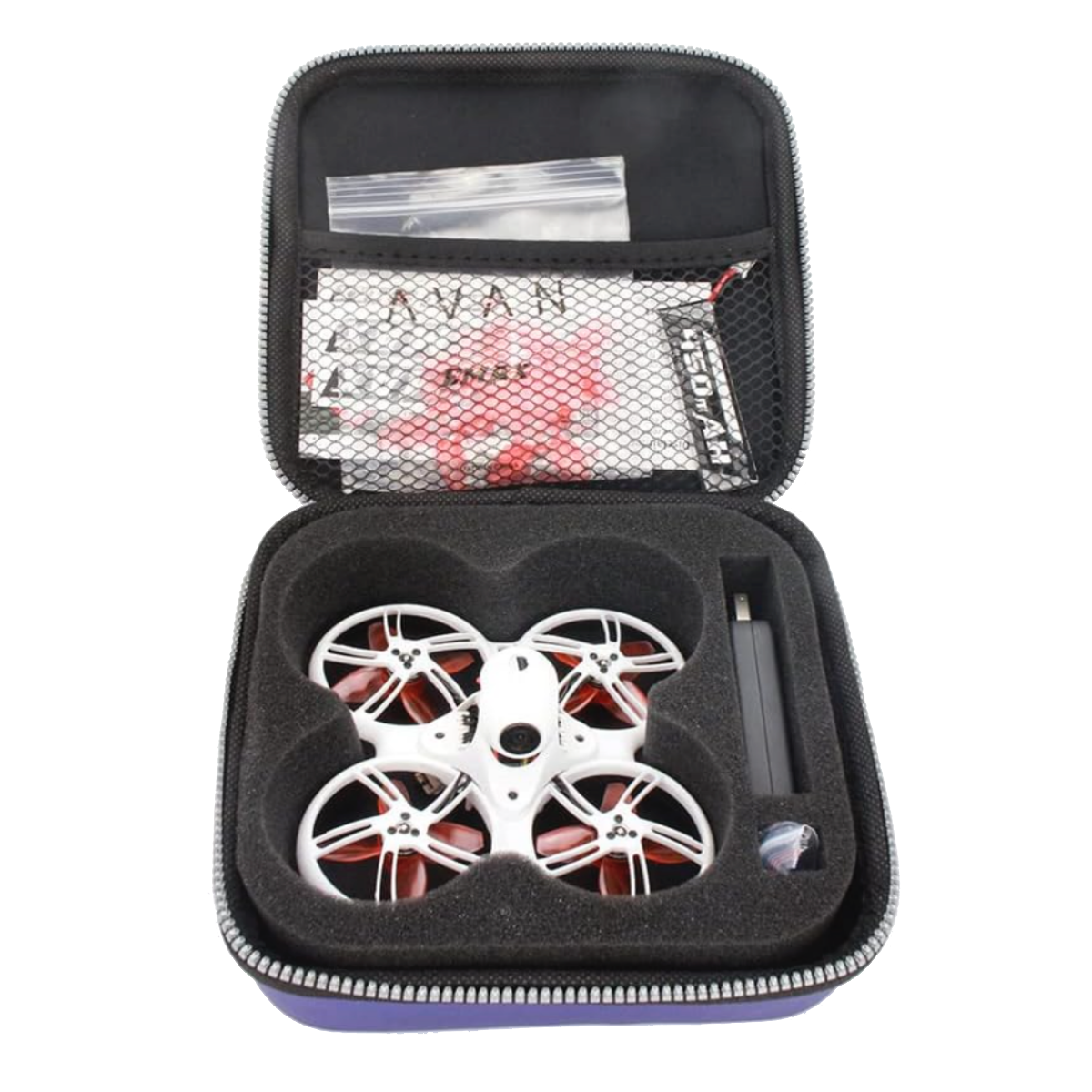
EMAX Tinyhawk 2
For thrilling FPV racing with a mini drone, the EMAX Tinyhawk 2 has a powerful motor and bright LED lights that increase in illumination the faster it goes. It’s a fun racing drone for all levels and ages, and you can fly it indoors and out.
- Plug-and-play fun
- Fast with a powerful motor
- Throttle response LED system
- Suitable for outdoor and indoor use
- Not suitable for windy weather
- Poor battery life
FAQ
Q: Do I need a license when flying a drone?
Drone regulations vary from country to country. However, you must register your drone in the US if it weighs 250g (0.55lbs) or more. The same can be said for most other countries. However, it’s advisable to check local regulations before traveling.
However, there are drone-flying restrictions. If you are in the US and looking to fly an over 250g drone for commercial, government, or other non-recreational purposes, you will need a license from the FAA.
Q: Are small drones harder to fly than normal-sized drones?
Small drones can be a little more challenging to control. This is especially true when flying in windy conditions. Larger drones not only offer more stability but also have more features, such as sophisticated obstacle avoidance systems, that can make them easier to control.
Q: How long can mini-drones usually fly?
This largely depends on the drone manufacturer. More reputable brands, such as DJI, offer more efficient and longer-lasting batteries. You usually get around 30 minutes, but you can extend this when buying combo packs, which typically include more batteries.
Smaller drones, such as drones designed for children, have smaller batteries; therefore, flight times are usually shorter.
Q: What's the difference between a mini-drone and a micro-drone?
Mini-drone and micro-drone describe drones weighing under 250g (0.55lbs). While there tend to be conflicted opinions on what is a mini and what is a micro, the two terms are often used interchangeably.
Q: What is the 1:1 rule for drones?
The 1:1 rule is a safety precaution. When flying your drone, you must ensure people around you are safe. For every meter the drone ascends, it must also be laterally one meter away from any person. This ensures nobody is injured by your drone and is a particularly important rule to adhere to when flying in crowded and urban areas.

